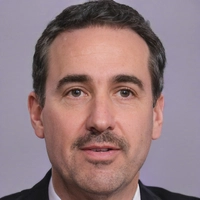Medical Tourism Cost & Quality Calculator
Select a Procedure
Compare Countries
Spain
#1India
BudgetThailand
Mid-rangeJapan
High-endSwitzerland
PremiumResults Comparison
When people ask, what is the healthiest country in the world, they’re not just curious about who eats the most vegetables or runs the most marathons. They’re looking for a place where people live longer, get sick less often, and still get quality care when they need it. And for those considering medical tourism, that answer isn’t just interesting-it’s life-changing.
Spain Tops the List-Here’s Why
In the 2024 Global Health Security Index and the Bloomberg Healthiest Country Index, Spain ranked #1. Not because of fancy hospitals or expensive treatments, but because of how consistently its system works for everyone. Life expectancy in Spain is 83.5 years-among the highest in the world. Infant mortality? One of the lowest. Chronic disease rates? Lower than the U.S. and even Japan.
What makes Spain different? It’s not magic. It’s a public healthcare system that covers every citizen and legal resident. No one skips a checkup because they can’t afford it. Doctors are paid to keep people healthy, not just to treat them when they break. Preventive care is built into the culture-regular screenings, community health programs, and free vaccinations are the norm.
And then there’s the lifestyle. Mediterranean diet isn’t just a trend here-it’s how people eat every day. Olive oil, fish, fresh vegetables, legumes, and minimal processed sugar. People walk more. They nap after lunch. They eat meals slowly with family. Stress? Lower than in most Western nations. It’s not one thing-it’s the whole package.
What Makes a Country ‘Healthiest’? It’s Not Just Life Expectancy
Many assume the healthiest country is the one with the longest-lived people. But life expectancy alone doesn’t tell the full story. A country could have high life expectancy because people survive childhood and old age, but still have terrible middle-age health-like high diabetes, heart disease, or mental illness rates.
True healthiness looks at:
- Access to primary care
- Preventive services (cancer screenings, vaccinations, prenatal care)
- Obesity and diabetes rates
- Smoking and alcohol consumption
- Mental health support availability
- Environmental factors (air quality, clean water, green spaces)
- Work-life balance and social safety nets
Japan, for example, has the highest life expectancy globally-84.7 years-but its mental health crisis is growing fast. Sweden has excellent social support but high alcohol-related deaths. Singapore has top-tier hospitals but high rates of type 2 diabetes due to diet shifts. Spain balances all these factors better than any other nation.
How This Matters for Medical Tourism
If you’re considering medical tourism, you’re probably looking for one of three things: lower cost, faster access, or better outcomes. Spain offers all three-without the trade-offs you find elsewhere.
Take hip replacements. In the U.S., the average cost is $40,000. In India, it’s around $8,000. But in Spain? Around $12,000. That’s not the cheapest-but here’s the catch: Spain has one of the lowest complication rates in Europe. Hospital-acquired infections? Less than 2%. Readmission rates? Half of what you’d see in the U.S. And recovery times? Faster, because physical therapy starts the day after surgery, and nutrition is part of the protocol.
And if you need cancer treatment? Spain’s survival rates for breast, colon, and prostate cancer are higher than the U.S. and Canada. Why? Early detection. Every citizen over 50 gets a free colonoscopy every two years. No waiting lists. No insurance hurdles. Just a call and an appointment.
Medical tourists from the U.S., Canada, and the UK are increasingly choosing Spain-not because it’s cheap, but because it’s reliable. No hidden fees. No language barriers (English is widely spoken in clinics). No rushed discharges. Just consistent, high-quality care.

Other Top Contenders and What They Get Right
Spain isn’t alone at the top. Here’s how other leading countries stack up:
| Rank | Country | Life Expectancy | Key Strength | Weakness |
|---|---|---|---|---|
| 1 | Spain | 83.5 years | Universal care, preventive focus, Mediterranean diet | Regional disparities in rural areas |
| 2 | Italy | 83.3 years | Strong family support, low stress, local food culture | Aging population, strain on public system |
| 3 | Japan | 84.7 years | Longevity, low obesity, universal coverage | Rising mental health crisis, social isolation |
| 4 | Switzerland | 83.8 years | High-tech care, clean environment, low pollution | Expensive, insurance-based system |
| 5 | Australia | 83.2 years | Active lifestyle, strong public health campaigns | High rates of skin cancer due to sun exposure |
Each of these countries has something valuable to offer medical tourists. Italy’s holistic approach to aging and recovery is unmatched. Japan’s precision medicine and post-op care are world-class. Switzerland offers cutting-edge tech for complex surgeries. But none of them combine accessibility, prevention, and lifestyle as well as Spain.
Why Most Medical Tourism Destinations Fall Short
India, Thailand, Mexico, and Turkey are popular for medical tourism because of cost. But they often lack the systemic health infrastructure that keeps people well in the first place. A heart bypass might cost $7,000 in India-but the rate of post-op infections is 12% higher than in Spain. Dental implants in Thailand are affordable, but oral cancer screening isn’t routine. Cosmetic surgery in Mexico is cheap, but follow-up care is inconsistent.
Cost savings mean nothing if you end up back in the hospital. The healthiest countries don’t just treat illness-they prevent it. And that’s the real advantage for someone traveling for care: you’re not just getting a procedure. You’re stepping into a system designed to keep you healthy long after you leave.
What You Can Learn from the Healthiest Countries
You don’t need to move to Spain to benefit from its model. Even if you’re staying home, you can borrow what works:
- Make meals centered around vegetables, fish, and olive oil-not meat and processed carbs.
- Walk at least 30 minutes a day. Don’t wait for a gym membership.
- Get annual screenings-even if you feel fine. Early detection saves lives.
- Build social connections. Loneliness is as deadly as smoking.
- Don’t ignore stress. Chronic stress raises blood pressure, weakens immunity, and speeds aging.
Spain didn’t become the healthiest country by accident. It was policy, culture, and daily habits working together. You don’t need a national system to start living like one.
Final Thought: Health Isn’t a Destination-It’s a System
When you ask what is the healthiest country in the world, you’re really asking: Where do people live the longest, with the least pain, and the most dignity? The answer isn’t a single hospital or a miracle drug. It’s a society that values prevention over profit, community over convenience, and health over hype.
For medical tourists, that means choosing a destination not just for price or speed-but for sustainability. Because the best outcome isn’t just surviving a surgery. It’s living well after it.
Is Spain the only country worth visiting for medical tourism?
No, but it’s one of the few that balances quality, safety, and accessibility without extreme costs. Countries like Japan and Switzerland offer top-tier care for complex procedures, while Thailand and India are better for budget-focused treatments. Spain stands out because it delivers consistent, high-quality care across the board-from routine checkups to major surgeries-with low complication rates and strong aftercare.
Why do life expectancy numbers vary between sources?
Because different organizations measure different things. Some only look at average lifespan. Others factor in healthy years lived-meaning how long people live without chronic disease. Bloomberg’s index weights diet, environment, and healthcare access more heavily than just longevity. Spain scores high on both, which is why it leads most major rankings.
Can foreigners get healthcare in Spain?
Yes, but not automatically. Tourists can use the European Health Insurance Card (EHIC) if from an EU country. Non-EU visitors need private travel insurance that covers medical treatment. For long-term medical tourists, many clinics offer package deals that include accommodation, translation, and follow-up care. Some expats apply for residency to access public healthcare after one year of legal stay.
Are Spanish hospitals clean and modern?
Absolutely. Spain’s hospitals rank among the cleanest in Europe. Infection control is strict, and most public hospitals were rebuilt or upgraded after 2010. Private hospitals in Madrid and Barcelona rival top U.S. facilities in technology and staffing. Many have joint commissions from the U.S. and EU for quality assurance.
How does Spain’s healthcare cost compare to the U.S.?
Spain spends about half as much per person on healthcare as the U.S.-around $3,500 annually versus $12,500. But outcomes are better. A heart attack patient in Spain has a 20% higher survival rate and spends 30% less time in the hospital. The difference? Spain treats health as a right, not a commodity.






